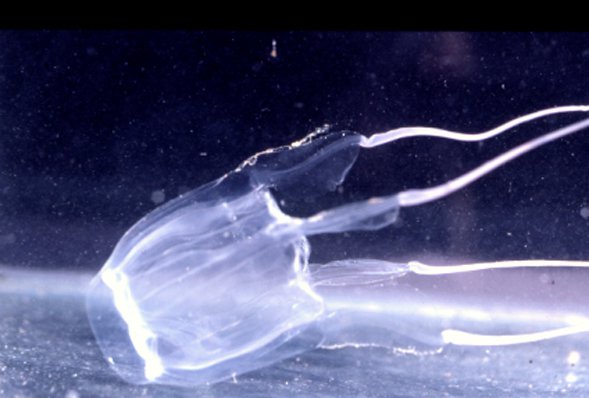Jimble
Introduction
The Jimble belongs to the Cubozoan order of jellyfish.
Identification
The Jimble, like all cubozoans, has a box-shaped bell with tentacles at each corner.
Habitat
Jimbles live in coastal waters, estuaries and oceans. The Jimble is the only cubozoan that occurs in the colder southern Australian waters. Occasionally it can be present in high densities in Sydney Harbour.
Distribution
The Jimble is found from Western Australia to Southern Queensland.
Danger to humans
Cubozoans are generally strong swimmers and have painful stings. Some tropical cubozoans are among the deadliest of all venomous marine animals, including the Box Jellyfish (Chironex fleckeri).
The Jimble, however, is not dangerous. It does sting but the venom potency is nowhere near as potent as its tropical relatives. The Jimble can still deliver a painful sting. If stung, wash the area with vinegar and apply a cold pack to relieve the pain. Seek medical attention if necessary.


